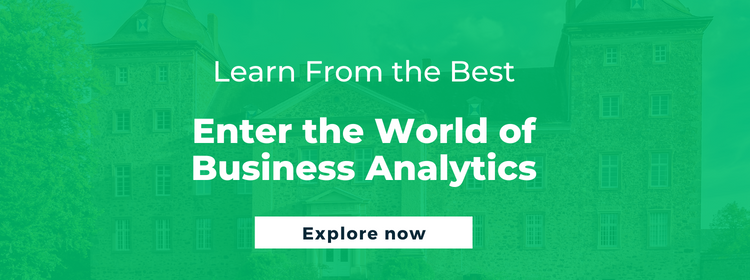What is ELT and How Does it Help Data Analysts

Unlocking the potential of data is essential for data analysts, and ELT is emerging as a vital process in this quest. To know that, though, we need to first understand what is ELT, and how it empowers analysts. Join us then as we explore what is ELT, its significance, applications, and its pivotal role in data analysis. This guide promises to equip you with the knowledge you need to excel in the data-driven world.
What is ELT, and How is it Different from ETL?
In the ever-evolving landscape of data integration, data handling, and data processing, the question that now has everyone’s attention is what is ELT. An acronym for Extraction, Loading, and Transformation, ELT is a data integration process. Here, analysts first extract raw information (in its original formats) from various sources and load it straight into a central repository such as a cloud data warehouse, a data lake, or a data lake house. Once that has been done, they then transform this data into suitable formats for further analysis and reporting.
What is ELT? First and foremost, it is a process to unlock more opportunities in the field of data integration and data analysis. Furthermore, this process is now emerging as a popular alternative to traditional ETL (Extract, Transform, Load) processes. ELT loads data into the target system before transforming it, allowing efficient processing of diverse data formats.
Difference Between ELT and ELT Process
The table below showcases the difference between what is ELT and its difference from the ETL process.
| ETL | ELT Process |
| Extract, Transform, Load | Extract, Load, Transform |
| All data transformation takes place within the staging area. | Conversely, all data transformation takes place in the target system. |
| Transformed data loads into a target system. | In contrast, raw data loads directly into the target system. |
| Sequential process, therefore, time-intensive | Faster loading directly into the target system. |
| Time depends on completion and also increases with data size. | Conversely, time is independent of data size, ensuring efficiency. |
| Compatible with on-premises as well as cloud storage solutions. | Since it is optimized for cloud data warehouses, ELT aligns with modern storage preferences. |
| ETL has a low storage requirement because only transformed data is retained. | High storage demand, as it stores both raw and transformed data. |
| Incompatible with data lakes. | Compatible with data lakes, which thus enhances flexibility in data storage options. |
| Generates structured data outputs. | Generates structured, semi-structured, and also unstructured data outputs. |
| Best suited for handling smaller amounts of data. | In contrast, ELT is suited for efficiently handling larger volumes of data. |
| Demands high maintenance due to a secondary processing server and the necessity to select data for loading and transformation. | Requires low maintenance because of a streamlined process and constant data availability. |
| Higher costs are incurred because separate servers are utilized. | Presents a comparatively lower cost structure with simplified data stacks. |
How Does ELT Improve the Efficiency of Data Analysis?
In the world of data analysis, efficiency is often the key to unlocking valuable insights and staying competitive in a rapidly evolving landscape. Enter ELT, an acronym that stands for Extract, Load, Transform. ELT represents a paradigm shift in the way data is handled, transformed, and processed, offering data analysts a powerful tool to streamline their workflows and enhance efficiency significantly.
1. Enhanced Data Handling and Integration
ELT significantly enhances data handling and integration. Furthermore, directly extracting and loading data into a repository accelerates the initial data ingestion process, which is particularly valuable for real-time data processing needs. Additionally, ELT also simplifies integrating diverse data sources, seamlessly bringing together structured and unstructured data without complex preprocessing. This flexibility empowers organizations to access a broader range of data types, thereby enriching their analytics and revealing hidden insights.

2. Efficient Data Transformation
In contrast to ETL, ELT defers data transformation to a later stage within the data repository. This approach reduces complexity during initial data ingestion, enabling rapid analysis of raw data. This speed-to-insight is especially beneficial in fast-paced industries. Moreover, ELT’s in-place data transformation is adaptable to evolving business needs, allowing for adjustments without extensive modifications to the initial pipeline. Consequently, this adaptability ensures agile and responsive data analysis.
3. Optimized Data Processing
ELT improves data processing by loading raw or minimally transformed data using modern warehousing and analytics tools’ processing power. These tools excel at handling large data volumes, enabling faster and more complex data processing tasks. Additionally, ELT’s support for parallel processing further accelerates data processing, making it ideal for big data environments requiring high-speed analysis of multiple datasets concurrently.
ALSO READ: Learn Data Analytics Online: A 7-Step Guide to Success
What Tools or Technologies are Commonly Used for ELT Processes?
In the domain of Extract, Load, Transform (ELT) processes, a wide range of tools and technologies stands ready to address diverse data integration needs.
- Cloud-based data warehousings solutions like Amazon Redshift, Google BigQuery, and Snowflake offer scalable and high-performance storage and processing capabilities, ideal for managing large data sets and optimizing ELT workflows
- Data integration tools such as Apache Nifi, Talend, and Informatica PowerCenter facilitate data movement, transformation, and integration, streamlining the extract, load, and transform stages
- Then there are the data pipeline orchestration tools; Apache Airflow and Kubernetes provide the infrastructure for automating ELT workflows, enhancing efficiency and reliability
- Data transformation and preparation tools like Apache Spark and Trifacta enable advanced data manipulation within the repository, facilitating meaningful insight extraction
In summary, a diverse array of tools and technologies supports various aspects of ELT, and understanding them is key to knowing what is ELT. The choice of specific tools depends on an organization’s unique needs, data sources, and scalability requirements, collectively providing the foundation for efficient data integration and analysis.
ALSO READ: Latest Big Data Technologies Ruling the Roost
What are the Key Steps Involved in an ELT Workflow?
So, what is ELT in terms of its workflows? Let’s take a closer look at the key steps in transforming data for meaningful analysis.
- First, analysts extract source data from diverse platforms and then load them into warehouses.
- Next, they explore data through meticulous examination of ERDs (Entity Relationship Diagrams) and data using ad hoc queries.
- Subsequently, data testing checks if certain important information (keys and check values) in the data matches what the organization expects and follows its rules and standards.
- The next step is documenting data from the purpose and key columns, which helps the nontechnical user understand the results.
- Lastly, transformations to production are scheduled and refreshed regularly. In simpler terms, it means that certain changes or modifications made to a system or process are put into action and updated regularly according to a set schedule.
ALSO READ: Anomaly Detection: Why it’s Important for Data Scientists
Can ELT be Applied to Real-Time Data Streaming?
By the end of 2024, over 207 billion connected devices will produce massive and varied data types, highlighting the need for real-time data handling. ELT processes, traditionally used for batch processing, have shown adaptability to real-time data streaming, making them versatile for dynamic data sets.
So, knowing what is ELT and what it offers in terms of efficiency has become crucial for analysts today. ELT’s suitability for real-time streaming lies in its ability to quickly extract and load data, ensuring minimal delays in data ingestion. This speed is vital for timely decision-making, especially in industries like finance, e-commerce, and health care. Additionally, ELT can transform streaming data within the repository, enabling on-the-fly insights and decisions with the right tools and infrastructure.
What is ELT then if not a tool to empower organizations? It is an efficient way to navigate the data deluge of a connected world, making it a valuable asset for agile and informed decision-making in real-time data environments.
ALSO READ: Become a Top 1% Business Data Analyst: 10 Key Skills to Master
To conclude, proficiency in data analytics will be one of the most in-demand skills in 2024, thanks to its key role and versatile applications in data-driven decision-making, artificial intelligence, and machine learning across industries. To gain more insights into what is ELT and kick-start your career in data analytics, join Emeritus’ well-crafted data science courses today!
Write to us at content@emeritus.org






